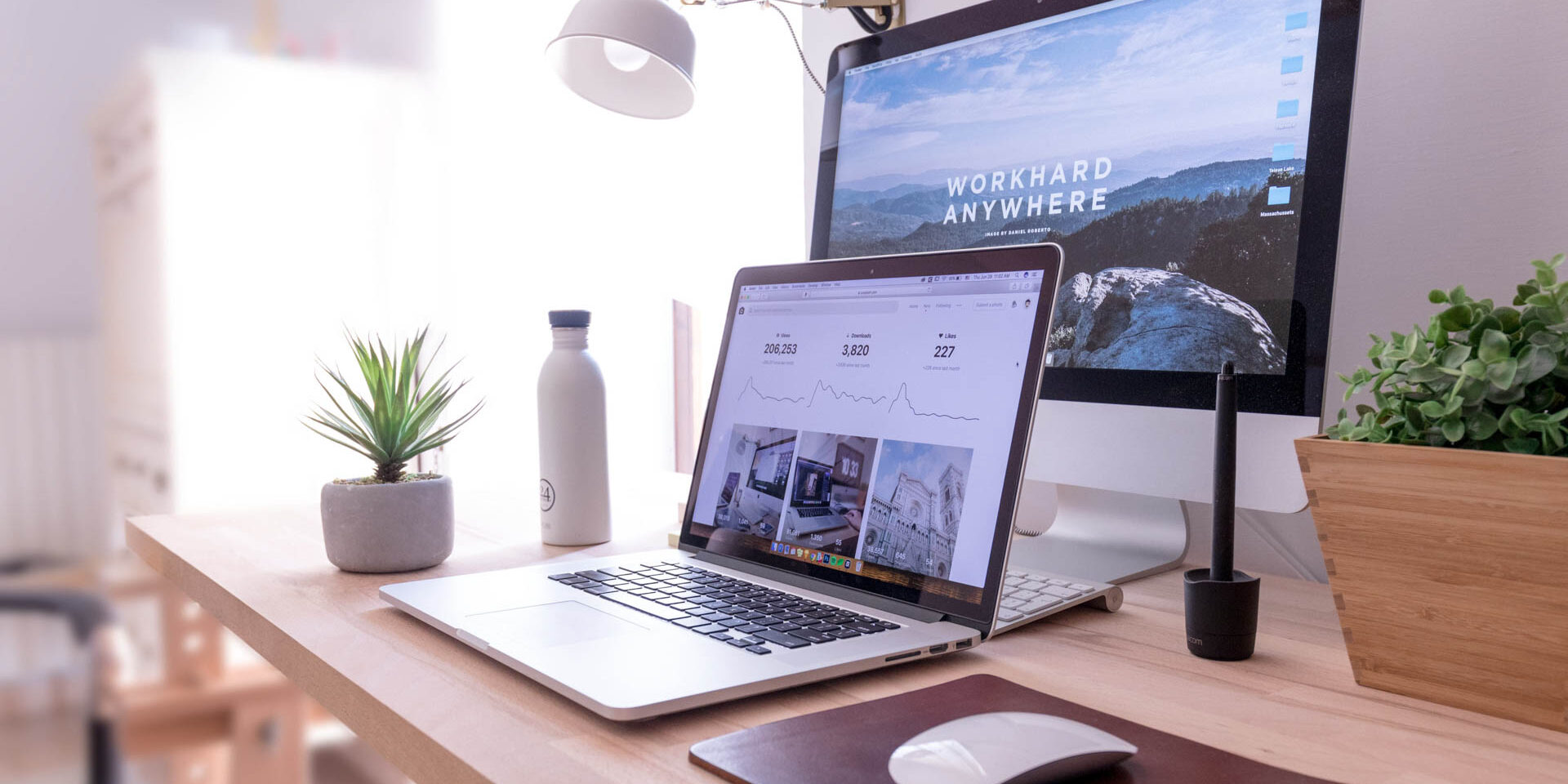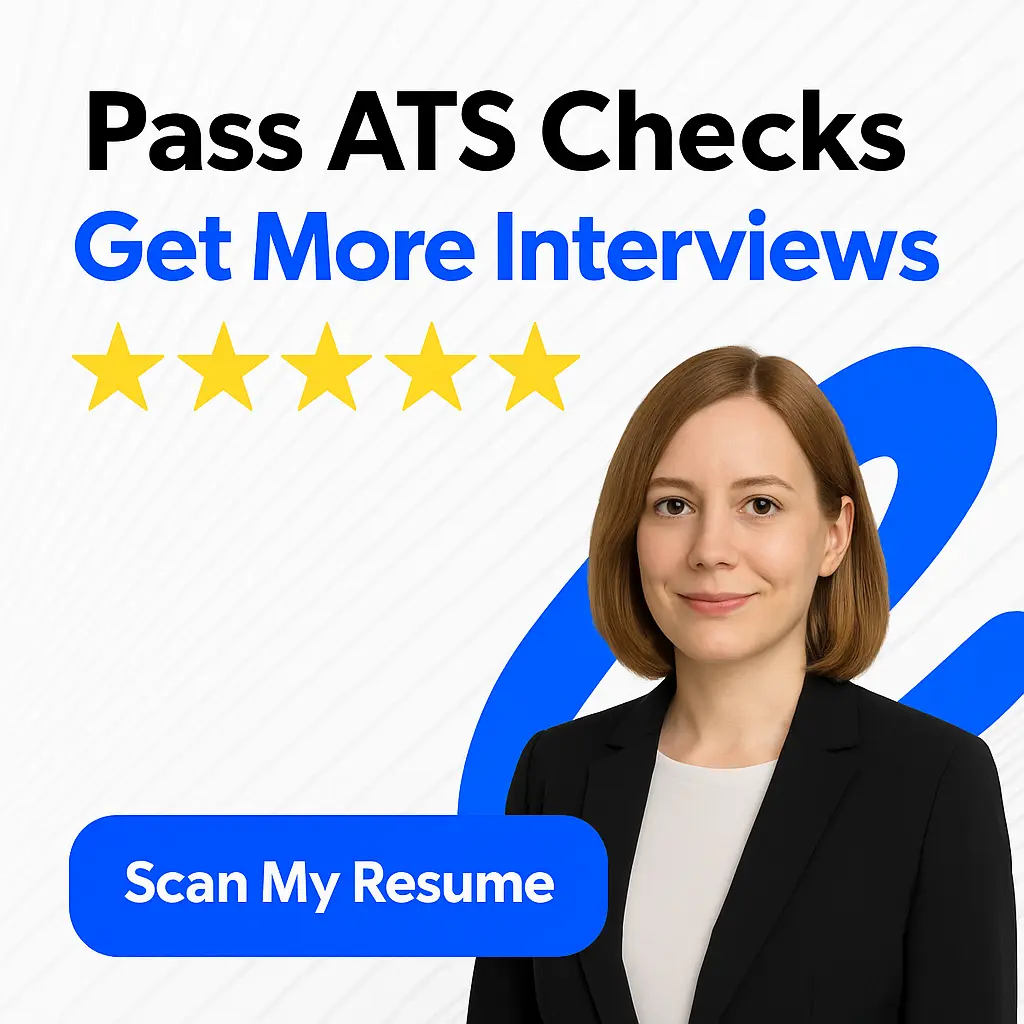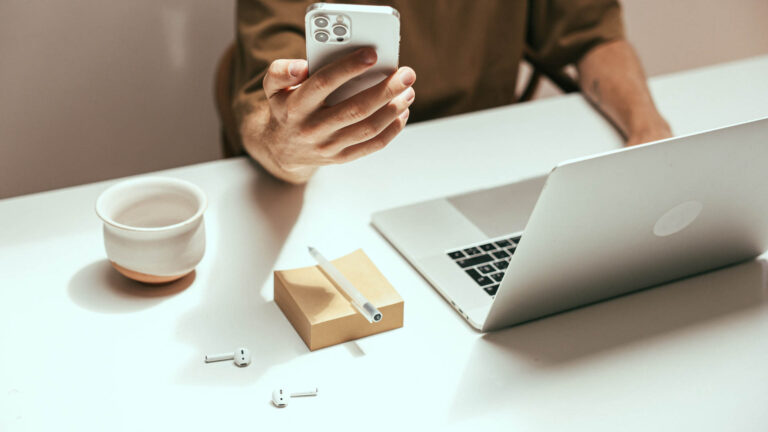As a job seeker, you know how important it is to make a good impression during an interview. But, did you know that following up with a thank-you email can also make a big impact on your chances of getting hired? Sending a follow-up email after an interview is a critical step that should not be overlooked.
In this article, we will provide you with examples of effective follow-up emails that will help you stand out and leave a lasting impression on your interviewer. Whether you are trying to secure your dream job or build a lasting professional relationship, these tips will guide you in crafting the perfect follow-up email.
By the end of this article, you will have the knowledge and resources to confidently write follow-up emails that will help you secure your next job or build a valuable professional relationship. So, let’s dive in and learn how to write the perfect follow-up email after your next interview.
Benefits of Sending Follow-Up Emails after an Interview
Job seekers often believe that their sole responsibility after a job interview is to sit and wait for the company’s response. However, sending a follow-up email can make a significant difference in the outcome of the hiring process. Here are the benefits of sending follow-up emails after an interview:
Why sending a follow-up email is crucial for job seekers
Sending a follow-up email can demonstrate a job seeker’s enthusiasm, professionalism, and interest in the position. It is a chance for the candidate to assert themselves as a proactive, diligent candidate who is keen on joining the company. The follow-up email can also provide an opportunity for a candidate to address any questions or concerns the interviewer may have.


How a follow-up email can increase a candidate’s chances of getting the job
Research shows that job candidates who send follow-up emails after an interview are more likely to be offered the job. This is because the follow-up email can help the interviewer remember the candidate and their qualifications. It also shows the candidate’s dedication to the job, making them stand out from other applicants who may not have sent a follow-up email.
Moreover, sending a follow-up email can also provide an opening for the candidate to address any concerns that the interviewer may have had during the interview. Candidates can use the opportunity to remind the interviewer of their qualifications or provide further evidence of their skills and experience.
Sending a follow-up email after a job interview can have a significant impact on a job seeker’s chances of getting the job. A follow-up email can demonstrate the candidate’s dedication to the position, provide an opportunity to address any concerns, and make them stand out from other applicants. Therefore, job seekers are encouraged to send a follow-up email after their job interview.
Types of Follow-Up Emails
After a job interview, there are various types of follow-up emails that can be sent to show your interest in the position and your appreciation for the opportunity to be considered. Here are some different types of follow-up emails that you can consider sending:
1. Thank You Email
The thank-you email is the most common type of follow-up email after an interview. This email should express your gratitude for the opportunity to interview for the position, confirm your interest in the job, and highlight your qualifications for the role. It’s important to send this email within 24-48 hours of the interview to ensure the interviewer remembers you.
2. Additional Information Email
If there were areas during the interview where you didn’t have a chance to elaborate on your experience or qualifications, you could consider sending an additional information email. This email should provide any extra details that you didn’t get to share during the interview and can showcase your relevant skills.
3. Follow-Up Email for Feedback
If you haven’t heard back from the interviewer within the expected timeframe, you could consider sending a follow-up email for feedback. This email should express your continued interest in the position and politely inquire about the status of your application or the next steps in the hiring process. It’s important not to sound pushy, but rather to show your professionalism and interest in the job.
4. Networking Email
If you interviewed with someone who is not directly involved in the hiring process but has connections or influence within the company, you could consider sending a networking email. This email should express your appreciation for the opportunity to meet with them, ask for any additional advice or insights they may have, and ask to connect on LinkedIn to stay in touch.
When to send each type of follow-up email
It’s important to time your follow-up emails appropriately to show your interest and respect for the hiring process. Here is a general guideline for when to send each type of follow-up email:
- Thank You Email: Within 24-48 hours of the interview
- Additional Information Email: Within a few days after the interview if you think it’s necessary
- Follow-up Email for Feedback: After the expected timeframe for a response has passed, usually a week or two after the interview
- Networking Email: Within a few days after the interview if applicable
It’s crucial to send follow-up emails after a job interview to convey your enthusiasm for the position and leave a positive impression on the interviewer. With the right timing and approach, you can increase your chances of landing the job.
Components of a Good Follow-Up Email
When writing a follow-up email after an interview, there are certain components that should be included in order to make it effective. Here are the necessary components of a good follow-up email:
1. Introduction
Begin your email by greeting the interviewer and thanking them for taking the time to meet with you. This shows that you are appreciative and respectful of their time and effort.


2. Reminder of Your Qualifications
Remind the interviewer of your qualifications and why you are a good fit for the position. This will reinforce your interest in the opportunity and help the interviewer see why you are the best candidate for the job.
3. Proof of Interest
Show your interest in the position by mentioning specific aspects of the job or company that you found particularly attractive. This will demonstrate that you have done your research and are genuinely invested in the opportunity.
4. Follow-Up/Next Steps
In your email, ask about the next steps in the hiring process or when you can expect to hear back. This will show that you are eager to move forward in the process and are committed to pursuing the opportunity.
5. Closing
End your email by expressing gratitude for the opportunity, reiterating your interest in the position, and providing your contact information. This will allow the interviewer to easily reach out to you if they have any follow-up questions or updates.
Tips on How to Structure and Write a Follow-Up Email
When structuring and writing a follow-up email, it is important to keep in mind the purpose of the email: to express your continued interest in the position and to remain top of mind with the interviewer. Here are some tips to help you write an effective follow-up email:
1. Be Professional
Maintain a professional tone throughout your email. Use proper grammar, avoid slang and abbreviations, and address the interviewer by their formal name (e.g. Mr. Smith or Ms. Johnson).
2. Keep it Concise
Your follow-up email should be brief and to the point. Stick to the necessary components and only include relevant information. Avoid rambling and going off-topic.
3. Personalize Each Email
Avoid using a generic template for your follow-up emails. Personalize each email by including specific details about the interview or the company, and tailor your language to the particular interviewer.
4. Follow-Up Promptly
Send your follow-up email within 24-48 hours after the interview to stay top of mind with the interviewer. Waiting too long to follow up can make you appear disinterested or unorganized.
5. Proofread Your Email
Proofread your email for grammar and spelling errors, and make sure that all the necessary components are included. A well-written and error-free email can help you make a positive impression with the interviewer.
Dos and Don’ts of Follow-Up Emails
After an interview, sending a follow-up email is essential to show your interest in the job and leave a lasting impression on the employer. However, not all follow-up emails are created equal. To ensure your email is professional, effective, and impactful, follow these dos and don’ts when crafting your follow-up email.
Dos
- Do personalize your email: Start your email by addressing the interviewer by their name and expressing gratitude for the opportunity to interview for the position. Use this as a chance to remind them of some of the qualities that make you suited for the role.
- Do be concise: Keep your follow-up email brief and to the point. Your goal is to show professionalism, not to take up too much of the employer’s time.
- Do include any additional information: If there is any information you neglected to mention during the interview, now is the time to include it. This could be a relevant skill, a clarification of your availability, or any additional qualifications.
- Do express enthusiasm: In addition to thanking the interviewer for their time, let them know that you are excited about the opportunity to work with the company. This will reinforce your interest in the position and leave a positive impression.
Don’ts
- Don’t wait too long to send your follow-up email: Time is of the essence; the sooner you send your follow-up email, the better. Waiting too long can give the impression that you are not interested in the position or unorganized.
- Don’t send generic or impersonal emails: Avoid using generic templates or copy-pasting the same email to multiple employers. This can come across as insincere and unprofessional.
- Don’t be pushy or aggressive: While it’s important to express your interest in the position, avoid being overly aggressive or pushy. This could turn off the employer and harm your chances of securing the job.
- Don’t forget to proofread: Ensure that your email is free of typos or grammatical errors. Sloppy mistakes can suggest that you are not detail-oriented or negligent.
By following these dos and don’ts, you can craft an effective and professional follow-up email that demonstrates your interest in the job, highlights your qualifications, and leaves a lasting impression on the employer.
Example Follow-Up Emails
In this section, we will provide you with five example follow-up emails for different scenarios. Additionally, we will analyze and explain what makes each email effective.
Example #1: Thank-You Email
Dear [Interviewer],
I wanted to take the time to thank you for taking the opportunity to speak with me about the [Position] role at [Company Name] earlier today. I appreciated the chance to learn more about the organization and the role.
After speaking with you, I am even more excited about the possibility of joining your team. I believe that my skills and experience would be a great fit for the position and would allow me to make a meaningful contribution to [Company Name].
Thank you for considering me for this opportunity, and I look forward to hearing from you soon.
Best regards,
[Your Name]
Why it’s effective:
This email is effective because it demonstrates gratitude, shows enthusiasm for the position, and reiterates the candidate’s fit for the role. It also expresses a desire to continue the conversation, leading to a positive impression on the interviewer.
Example #2: Clarification Email
Dear [Interviewer],
It was a pleasure speaking with you today regarding the [Position] role at [Company Name]. During our conversation, I realized I did not address a specific point regarding a skill set that I think is important.
Given what you had mentioned, I believe my experience in [Skill Set] could help me excel in the role. Could you confirm if my understanding is correct?
I look forward to hearing from you soon.
Best regards,
[Your Name]
Why it’s effective:
This email is effective because it shows that the candidate is engaged and attentive during the interview. By asking a question and seeking clarification, the candidate is further demonstrating their fit for the position and willingness to learn and improve.
Example #3: Professional Persistence Email
Dear [Interviewer],
I am writing to follow up on my previous email regarding the [Position] role at [Company Name]. I have not heard back from you as of yet, and I wanted to reiterate my interest in the position.
I understand that you likely have a busy schedule, and that the hiring process can take time. I would appreciate it if you could provide me with an update on the status of the position when you have a moment.
Thank you again for considering me for the role. I remain excited about the opportunity to join [Company Name] and contribute to its success.
Best regards,
[Your Name]
Why it’s effective:
This email is effective because it demonstrates professional persistence without being pushy or aggressive. By acknowledging the interviewer’s busy schedule and expressing continued interest, the candidate is showing that they are dedicated to the role and are willing to follow up to achieve their goals.
Follow-Up Email Samples
If you’re struggling with what to include in your follow-up email after an interview, don’t worry – you’re not alone. Many job seekers find themselves in this position, which is why we’re providing some extra sample follow-up emails that can serve as inspiration as you create your own.
Additional Samples for Inspiration
Consider the following sample follow-up emails as jumping-off points for creating your own unique message:
-
The “Thank You” Follow-Up: This email follows up on your thank-you note and emphasizes your continued interest in the position.
-
The “Checking In” Follow-Up: This email checks in on the status of the hiring process while also reiterating your qualification for the position.
-
The “Additional Materials” Follow-Up: This email sends any additional materials (such as a portfolio or writing samples) that were referenced during the interview.
-
The “Referral” Follow-Up: This email mentions a referral from someone (such as a current employee) within the company and expresses gratitude for the opportunity to interview.
Warnings About Copying and Pasting Templates Without Customizing Them
While it may be tempting to simply copy and paste one of the sample follow-up emails provided here without making any changes, it’s important to customize the email to the specific situation.
Copy-pasting a template mars your chance of making a good impression. Hiring managers receive numerous follow-up emails daily and they can identify a template easily. It is therefore crucial that you personalize your email with relevant details that pertain to the job and the interview.
Read through each email provided, pick out the characteristics of each email that spoke to you, discover the good things that you liked most in each email, and then tailor each aspect of the email to suit the job position and interview.
Lastly, ensure that your email is error-free – always edit and proofread your email before sending it.
By customizing your follow-up email after an interview, you’ll demonstrate your thoughtfulness and attention to detail while maximizing your chances of landing the job.
Timing of Follow-Up Emails
As a job applicant, it’s crucial to send a follow-up email after an interview. Not only does it show your appreciation and interest in the position, but it also keeps you top of mind with the hiring manager. However, timing is everything when it comes to follow-up emails.
Ideal timing for sending a follow-up email
The ideal timing for sending a follow-up email is within 24 hours of your interview. It’s essential to strike while the iron is hot, and the interviewer still has a clear memory of the conversation. This timeframe not only shows you’re prompt and professional, but it also gives you an advantage over other applicants who may delay their follow-up.
Additionally, if the interviewer gave you a specific date for when they plan to make a decision, aim to send your follow-up email a day or two before that date. This gives you another opportunity to remind the hiring manager of your interest and to reiterate your qualifications before they make their final decision.
Factors that can affect the timing of sending a follow-up email
While an immediate follow-up may be ideal, there are several factors that can affect the timing of sending a follow-up email.
First, consider the interviewer’s availability. If you had an interview on a Friday afternoon, it may be better to wait until the following Monday to send a follow-up. This gives the interviewer time to review their notes and respond to any urgent matters before they check their email.
Another factor is the company culture. Some employers may prioritize quick and efficient communication, while others may encourage a more laid-back approach. Research the company’s communication style and adjust your follow-up timing accordingly.
Lastly, it’s essential to maintain a balance between being persistent and being pushy. Sending too many follow-up emails within a short period may come across as aggressive and could turn off the hiring manager. Instead, wait a week or two before sending a polite and concise email to follow-up on your application status.
Timing is critical when it comes to sending a follow-up email after an interview. Aim to send your email within 24 hours of your interview, but consider factors such as interviewer availability and company culture. By striking the right balance between persistence and patience, you can increase your chances of getting the job.
How to Follow Up without Being Pushy
After an interview, it’s natural to want to follow up with the hiring manager or interviewer to express your continued interest in the position and to thank them for their time. However, it’s important to strike a balance between staying top of mind and becoming a nuisance.
Here are some strategies for staying top of mind without bothering the interviewer:
-
Give it time: Wait at least 24 hours after your interview before following up. This gives the interviewer time to process your application and make any necessary decisions.
-
Be mindful of their schedule: Avoid sending follow-up emails during peak hours, such as early in the morning or late in the day. Instead, aim for mid-morning or early afternoon when the interviewer is likely to have a bit more free time.
-
Show interest, not desperation: In your follow-up email, express your continued interest in the position and why you believe you would be a good fit. Avoid language that comes across as desperate or needy, and instead focus on showcasing your qualifications.
-
Provide value: If possible, offer something of value in your follow-up email. For example, if you came across an article or resource that you think might be of interest to the interviewer, include it in your email.
-
Keep it short and sweet: A follow-up email should be brief and to the point. Express your gratitude, reiterate your interest in the position, and offer any additional information that you feel would be relevant.
Here are some tips for sending a polite and respectful follow-up email:
-
Use a professional tone and format: Address the interviewer in a professional manner, and use proper grammar and spelling. Use a font and format that is easy to read.
-
Start with a polite greeting: Begin your email with a simple greeting, such as “Dear Ms. Smith”.
-
Thank them for their time: Express your gratitude for the time the interviewer spent with you during the interview.
-
Reiterate your interest: Let the interviewer know that you are still interested in the position and explain why you believe you would be a good fit.
-
Offer to answer any questions: Provide your contact information and let the interviewer know that you are available to answer any additional questions they might have.
-
Close with a polite farewell: End your email with a polite farewell, such as “Thank you for your time and consideration.”
Remember, a follow-up email is an opportunity to demonstrate your interest and professionalism, so make sure your message is polite, thoughtful, and respectful.
Following Up after No Response
So you’ve sent a follow-up email after your interview, but you haven’t received a response. Don’t panic! It’s not uncommon for interviewers to get busy and forget to respond. But what should you do next?
1. Give it Time
It’s important to remember that interviewers are often very busy people. Depending on the position you’re interviewing for, they could be juggling multiple candidates, or they could have a lot of other work on their plate. So the first thing you should do if you haven’t received a response to your follow-up email is to give it some time. Wait at least a week before following up again.
2. Send a Polite Reminder
If a week has passed and you still haven’t received a response, it’s appropriate to send a polite reminder. Keep your email short and to the point, and make sure to reiterate your interest in the position. For example:
Hi [Interviewer’s Name],
I hope this email finds you well. I just wanted to follow up on my interview last week for the [Position] role. I’m still very interested in the position, and I wanted to touch base to see if there were any updates on the hiring process.
Thank you for your time, and I look forward to hearing from you.
Best, [Your Name]
3. Consider Alternative Contact Methods
If you still haven’t received a response after sending a polite reminder, it may be worth considering alternative contact methods. For example, if you’ve been corresponding via email, try giving the interviewer a call. Make sure to introduce yourself and ask if they have a few minutes to chat about the position.
Alternatively, if you have the interviewer’s LinkedIn or Twitter profile, you could send a message there. Just make sure to keep your message professional and polite.
4. Know When to Move On
While it’s always worth following up after an interview, there may come a point where you need to accept that you’re not going to receive a response. If you’ve followed up multiple times and still haven’t heard back, it may be time to move on and focus your energy on other job opportunities.
Remember, not receiving a response doesn’t necessarily mean you weren’t a great candidate – it may just mean that the position has already been filled, or that the interviewer has decided to pursue other candidates. Keep your head up, and keep applying for positions that you’re passionate about.
Related Articles
- Mover Resume: Winning Examples for 2023
- Engineering Cover Letter: 10 Samples & Writing Tips
- Veterinary Assistant Job Description: Salary, Skills, & More
- Quality Engineer Resume: Sample and Tips for 2023
- Construction Project Manager Resume: A Guide for 2023







